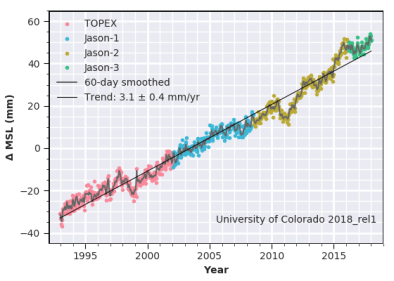Chennai Floods Fall 2015
Chennai, the capital of the Indian state of Tamil Nadu, was ravaged by record setting rainfall in late 2015 that led to widespread flooding. India’s increase in extreme precipitation events in recent decades is likely tied to climate change, as a warmer atmosphere holds more moisture, and, much like a larger bucket can dump more water, a moister atmosphere contributes to extreme precipitation.




A warmer and moister atmosphere, exacerbated by global climate change, is partially responsible for this increased precipitation and the floods that followed
Directly after Southern India's wettest November in more than 20 years ended,[1] December 2015 began with a new round of extreme precipitation that inundated the city of Chennai. Scientists have found that global climate change is influencing the frequency of extreme precipitation events, making them more common in peninsular, east and north east India, an area encompassing Chennai.[2] Although November and December are typically two of India's three wettest months, the rainfall and flooding during these months in 2015 was particularly exceptional.
Chennai received rainfall that was 300 percent above the average for the month of November.[1] Immediately following that, on the first day of December, Chennai received over 12 inches of rainfall, setting the record for the wettest December day in more than 100 years of recordkeeping in the region.[1] This continuous downpour caused massive flooding, which led to extensive evacuation and property damage.
These record high rainfalls are consistent with the trend toward more extreme precipitation in India that is catalyzed by climate change.
Continuing to warm our atmosphere will result in more extreme precipitation events
Our atmosphere can hold 7 percent more water per one degree Celsius increase in temperature.[3] As we continue to heat the earth, we will simultaneously increase the amount of moisture in the atmosphere, which will lead to an increase of intensity in all types of extreme rainfall events.[4]
This was one of the driving factors that led to the destructive Chennai flooding, and is projected to increase the intensity of extreme precipitation, especially for monsoon related rainfall events, in the future.
Related Content









